- Home
- Local History
- Bromley High Street
Bromley High Street
Written by Pam Preedy.
Bromley High Street has been constantly changing through time. Shops come; shops go, reflecting changing tastes, fashions and time. The market started life in 1205, granted by King John at the manor of Bromley and became a feature of Bromley life. I remember it; a busy market at Station Road car park by Bromley North Station. In 2012 it was relocated to the High Street. The Glades changed the landscape behind the High Street and opened on 22nd October, 1991. When it was opened it was almost a ghost town with few visitors. Now it is thriving.
Stand in the pedestrianised part of the High Street. Face Robert Dyas and you will see a parade of shops. At the beginning of the 20th Century one would have seen three houses, numbers 14-16: Bromley House, Ravensfell and Neelgherries, where Emily Dowding lived. On her death she left the house and gardens to Bromley town for ‘education and learning.’ With a gift of £7,500 In 1906 from Andrew Carnegie, a new library (long replaced by the Churchill theatre and library) was built, and the gardens became a pleasure ground. The Library Gardens were increased when Church House, beside the church was bought in 1926 and the grounds merged with the Neelgherries’ gardens. Church House and the church were demolished during a heavy bombing raid in 1941.
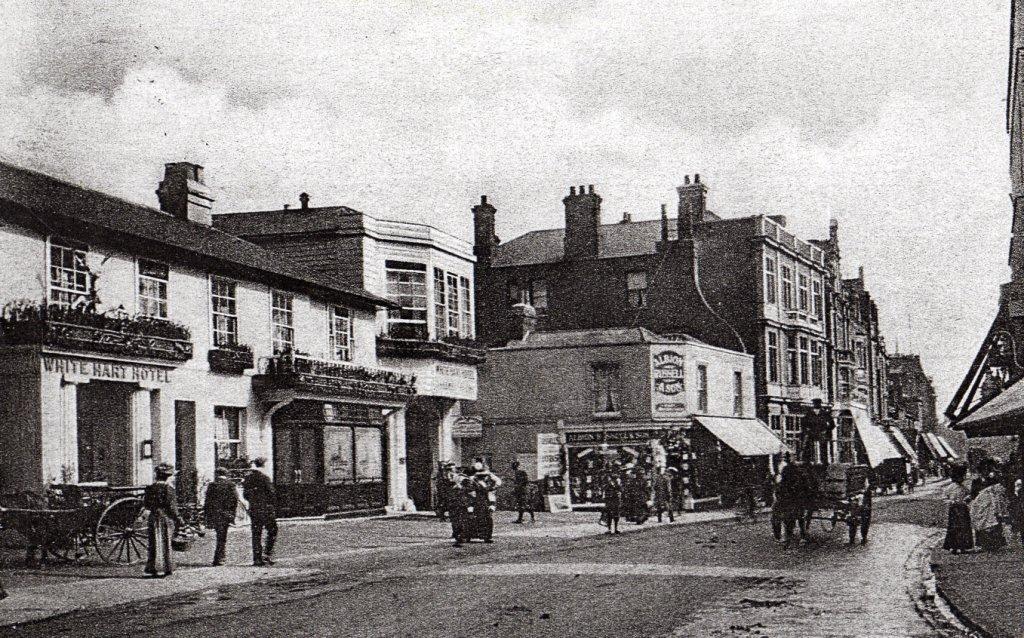
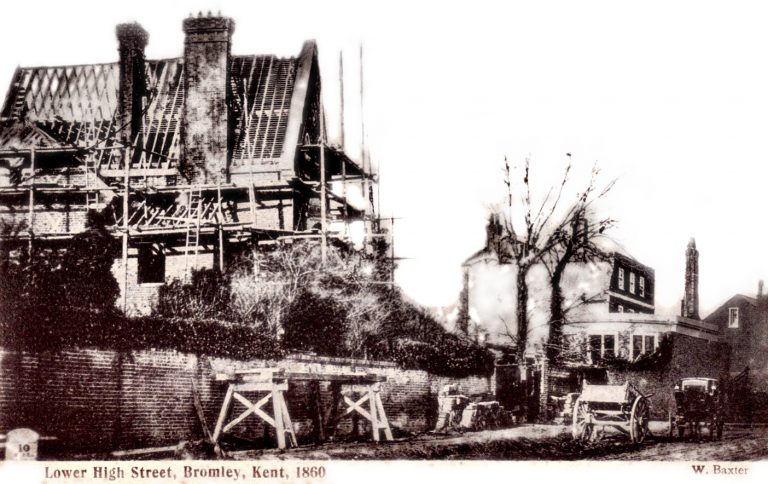
In 1918, Bromley Memorial team wanted the Memorial to honour the dead of World War 1 to stand in front of Bromley House and Ravensfell, in the heart of the town. The purchase price of Bromley House and Ravensfell together with the land was £15,000. But the valuer pointed out that the two houses were only worth £10,000, because the land was designated as residential land and not for the use of shops. They were proved wrong!
By 1926, Kelly’s directory showed Bromley House being used by the Inland Revenue Valuation Department and by the Inspector of Taxes. Meanwhile, in place of Ravensfell House, a parade of shops, Ravensfell Parade, listed 12 shops: Wood Jn., Garage (a remnant of the garage is in the alley beside Pret a Manger. Number 7 was Russell and Bromley Ltd boot makers, a business that only closed down in the last few years. The origins of Ravensfell itself can still be seen if one looks at the roof line.
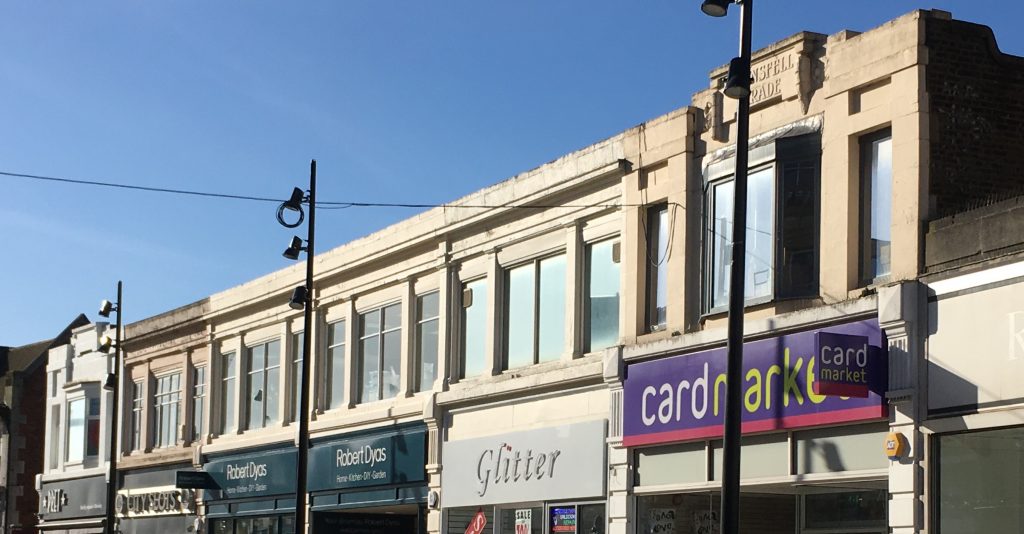
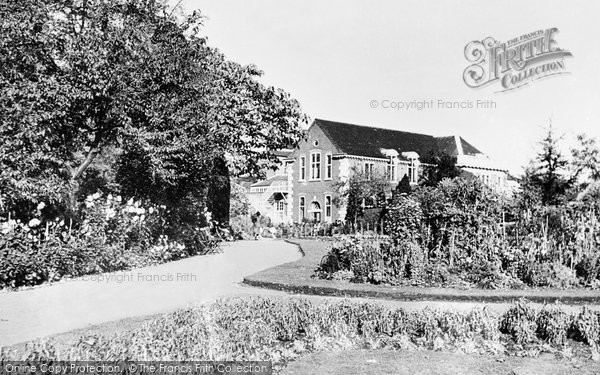
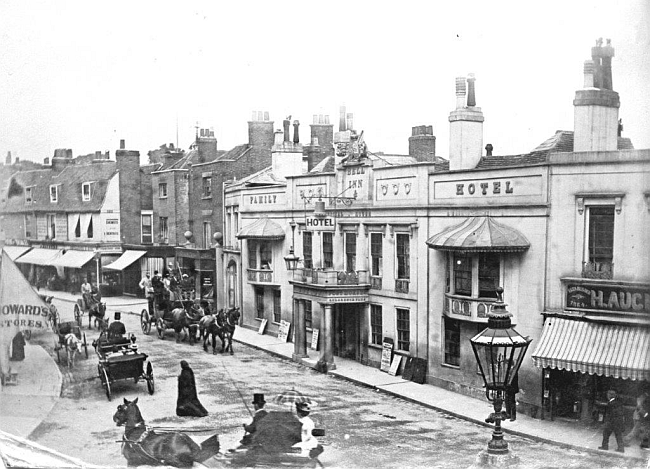
Later, Bromley House was replaced by another parade of shops. I remember the fore-runner of the Metro Bank was D H Evans, selling clothes for the more generously endowed ladies!
From your viewpoint in front of Robert Dyas turn around to look at the Aberdeen Building, built in 1887. The name appears at the top of the building. In 1914, aware of the lack of leisure amenities in Bromley for the young soldiers, in training, convalescing from their war injuries or home on leave a ‘Bromley Soldiers’ Welcome’ opened in this building, which had not long been vacated. The Kentish Times reported the opening
‘On the ground floor, the shop has been turned into a billiard room, two tables having been provided, whilst another room is used for bagatelle, etc. The 2nd floor is devoted to two refreshment rooms, a concert hall, and bathroom. On the third floor is a reading room well equipped, in which are found magazines, illustrated journals, morning and evening papers, and adjoining is a large room set aside for games. On the next floor are writing and rest rooms. The whole is beautifully clean and comfortable, and will in every way be a boon to our men on service, more especially for those away from home.’
It, too, has reverted to shops. We wander through the High Street, intent on our shopping missions or window shopping, meeting friends for coffee. Take a step back, raise your eyes and see vestiges of a time long past.
Further your research
You can find out lots more history about the Bromley and it’s High Street by visiting Bromley Historic Collections (2nd Floor of Bromley’s Central Library).
In its collections the library proudly holds a collection of Kelly’s Directories for the area, which are useful to use alongside their vast collection of local historical maps, to help pinpoint different buildings and find out their previous tenants.
They also hold a number of books written about the history of the town, as well as a fantastic photographic collection which you can browse through to see how the town has changed over the years.
Originally published in Life in Bromley magazine (Issue 2, April 2022)
